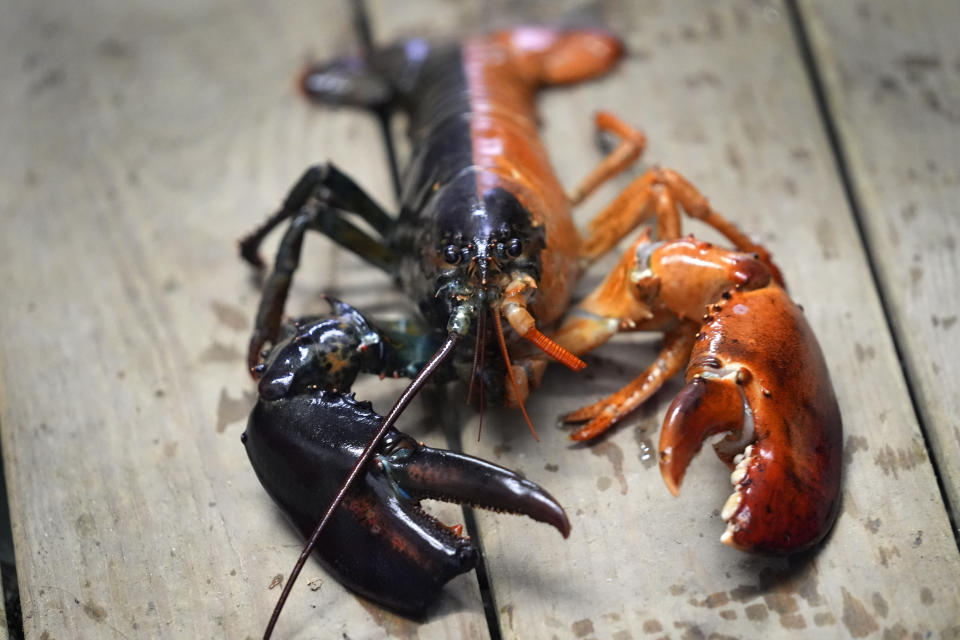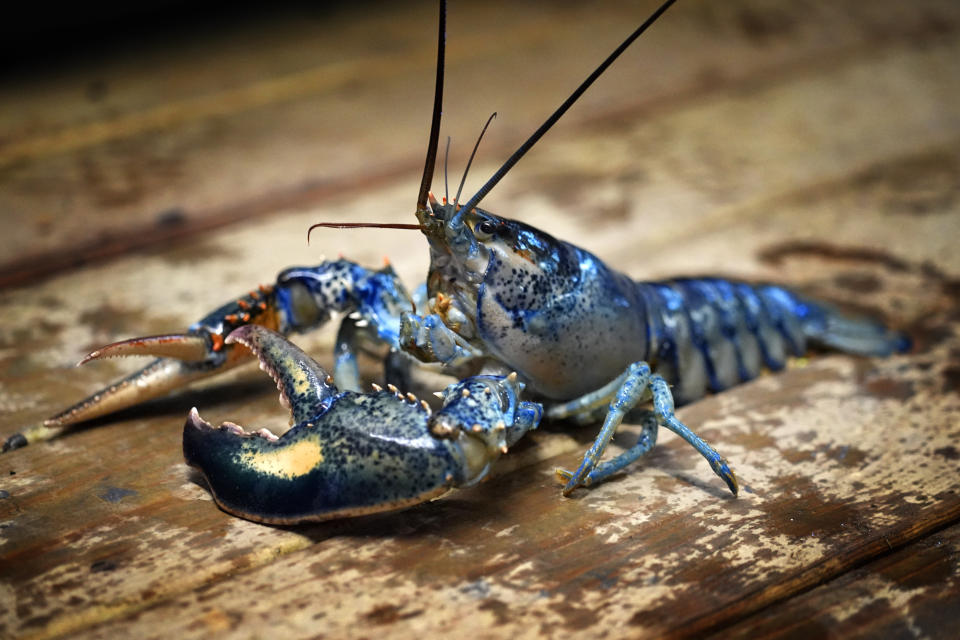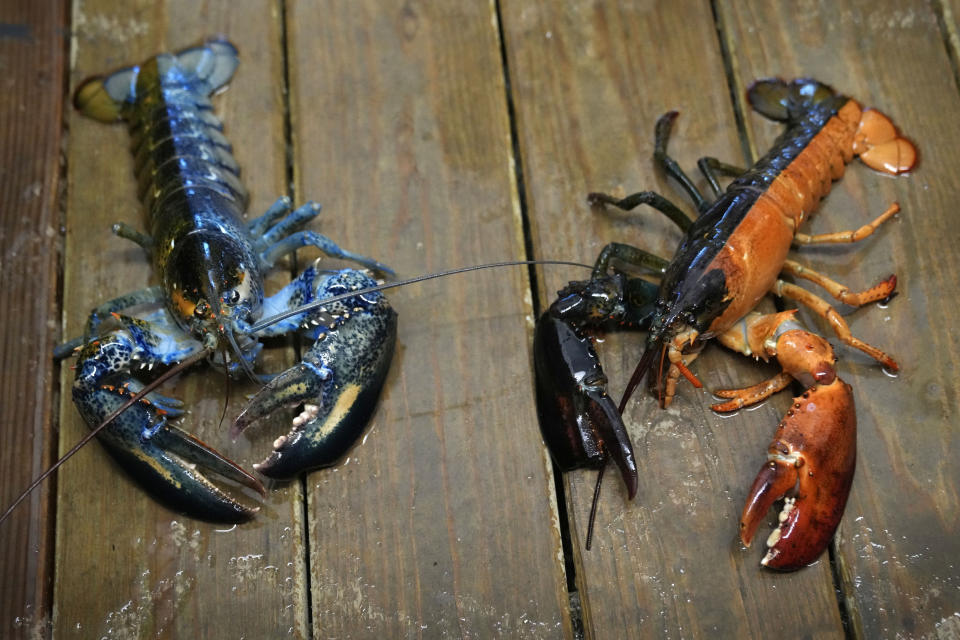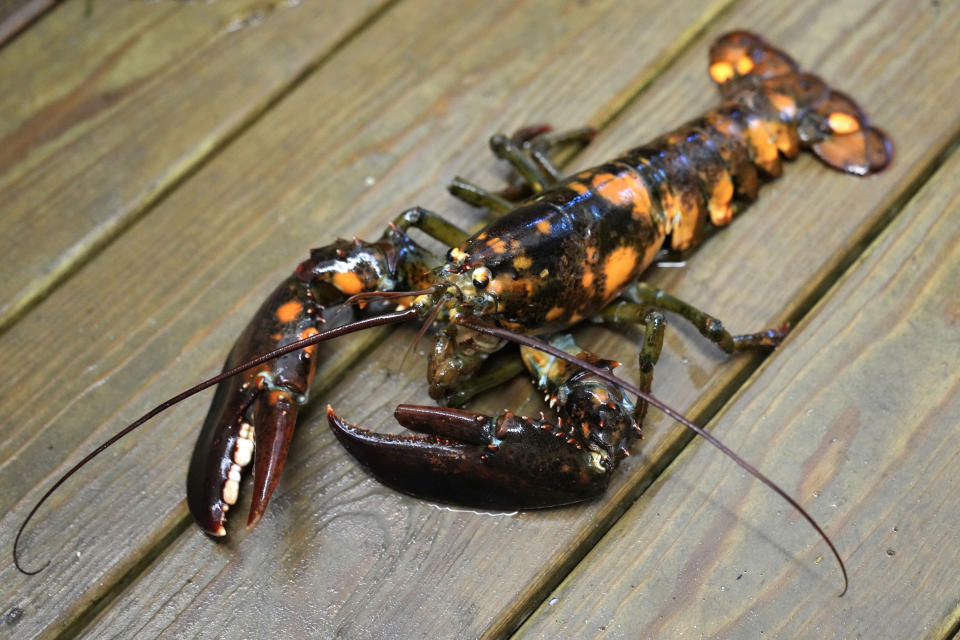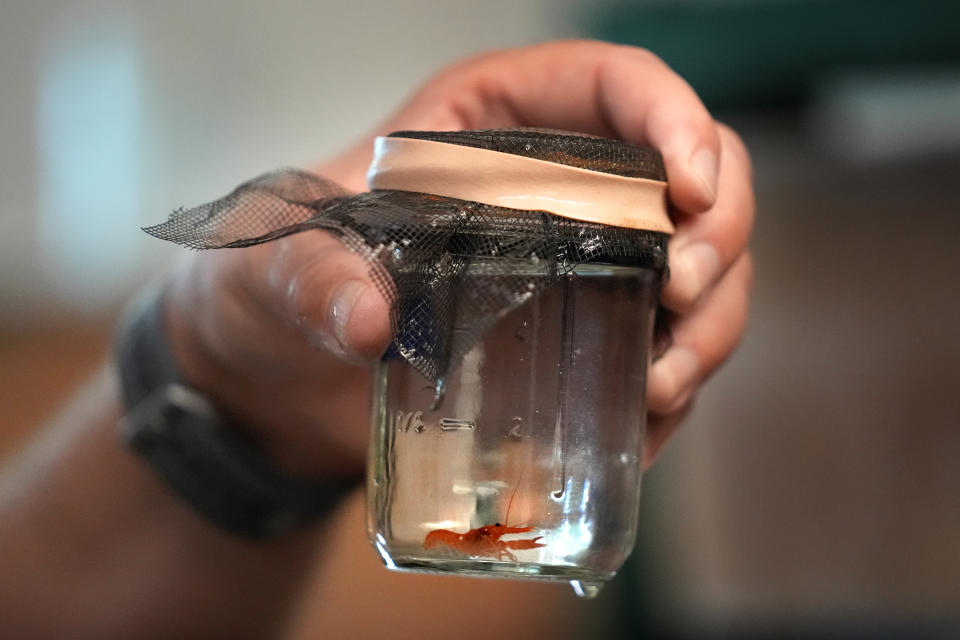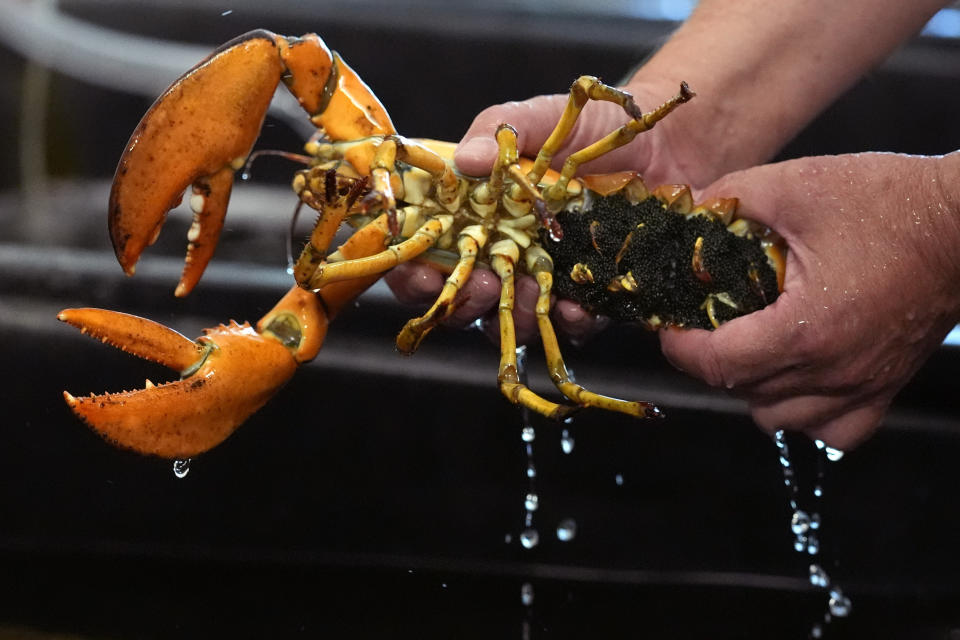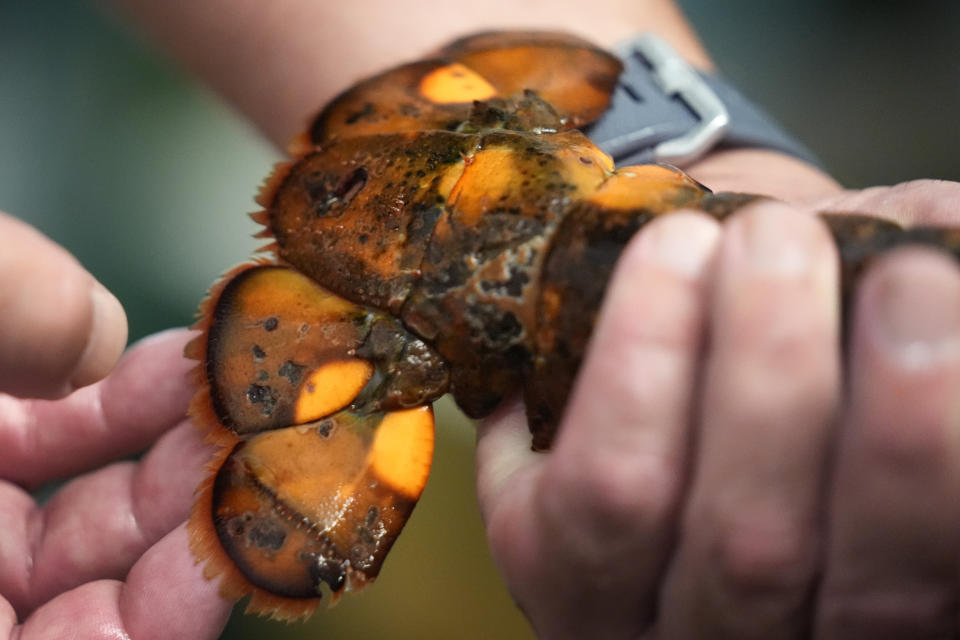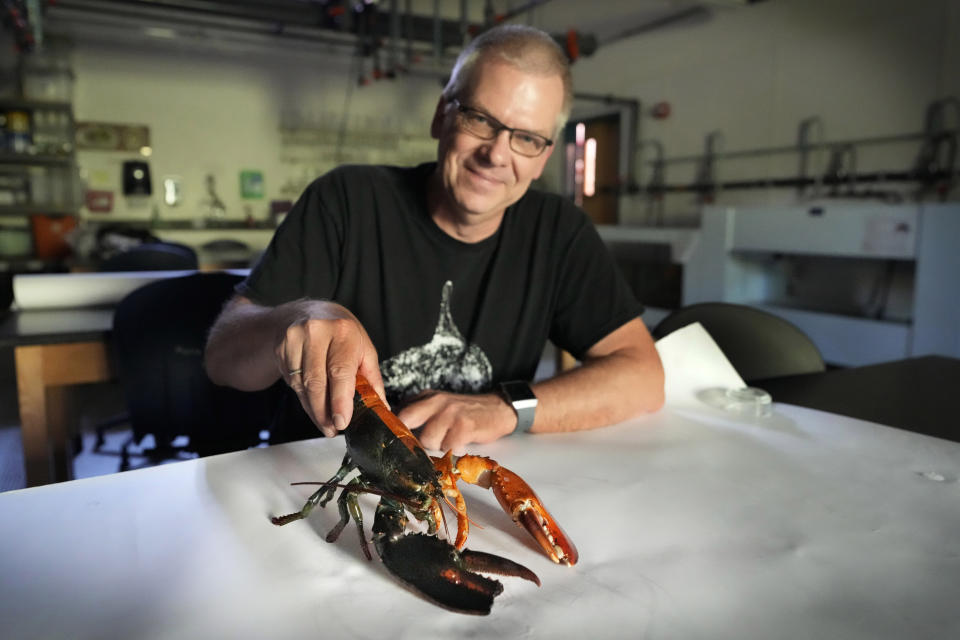BIDDEFORD, Maine (AP) — Orange, blue, calico, two-toned and ... cotton-candy colored?
Those are all the hues of lobsters that have showed up in fishers' traps, supermarket seafood tanks and scientists' laboratories over the last year. The funky-colored crustaceans inspire headlines that trumpet their rarity, with particularly uncommon baby blue-tinted critters described by some as "cotton-candy colored" often estimated at 1 in 100 million.
A recent wave of these curious colored lobsters in Maine, New York, Colorado and beyond has scientists asking just how atypical the discolored arthropods really are. As is often the case in science, it's complicated.
Lobsters' color can vary due to genetic and dietary differences, and estimates about how rare certain colors are should be taken with a grain of salt, said Andrew Goode, lead administrative scientist for the American Lobster Settlement Index at the University of Maine. There is also no definitive source on the occurrence of lobster coloration abnormalities, scientists said.
“Anecdotally, they don't taste any different either,” Goode said.
In the wild, lobsters typically have a mottled brown appearance, and they turn an orange-red color after they are boiled for eating. Lobsters can have color abnormalities due to mutation of genes that affect the proteins that bind to their shell pigments, Goode said.
The best available estimates about lobster coloration abnormalities are based on data from fisheries sources, said marine sciences professor Markus Frederich of the University of New England in Maine. However, he said, “no one really tracks them.”
Frederich and other scientists said that commonly cited estimates such as 1 in 1 million for blue lobsters and 1 in 30 million for orange lobsters should not be treated as rock-solid figures. However, he and his students are working to change that.
Frederich is working on noninvasive ways to extract genetic samples from lobsters to try to better understand the molecular basis for rare shell coloration. Frederich maintains a collection of strange-colored lobsters at the university's labs and has been documenting the progress of the offspring of an orange lobster named Peaches who is housed at the university.
Peaches had thousands of offspring this year, which is typical for lobsters. About half were orange, which is not, Frederich said. Of the baby lobsters that survived, a slight majority were regular colored ones, Frederich said.
Studying the DNA of atypically colored lobsters will give scientists a better understanding of their underlying genetics, Frederich said.

